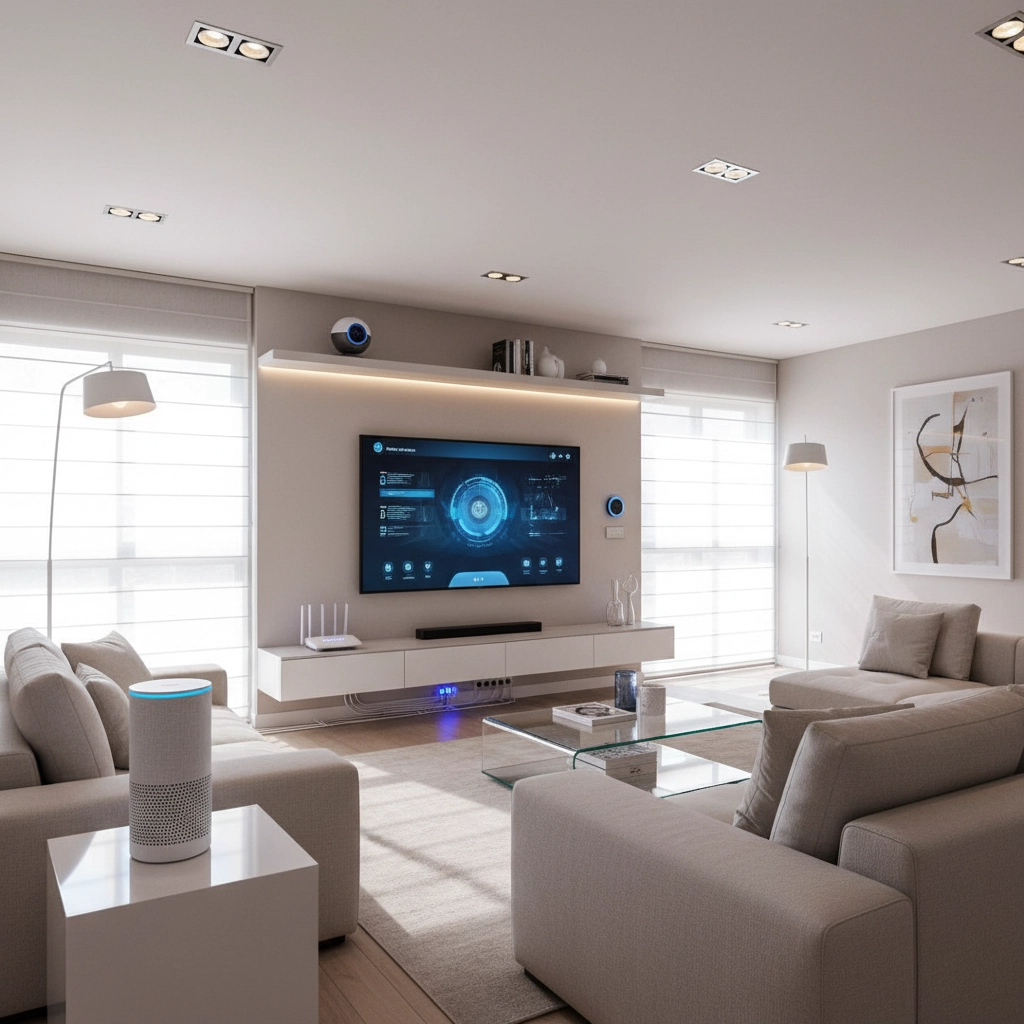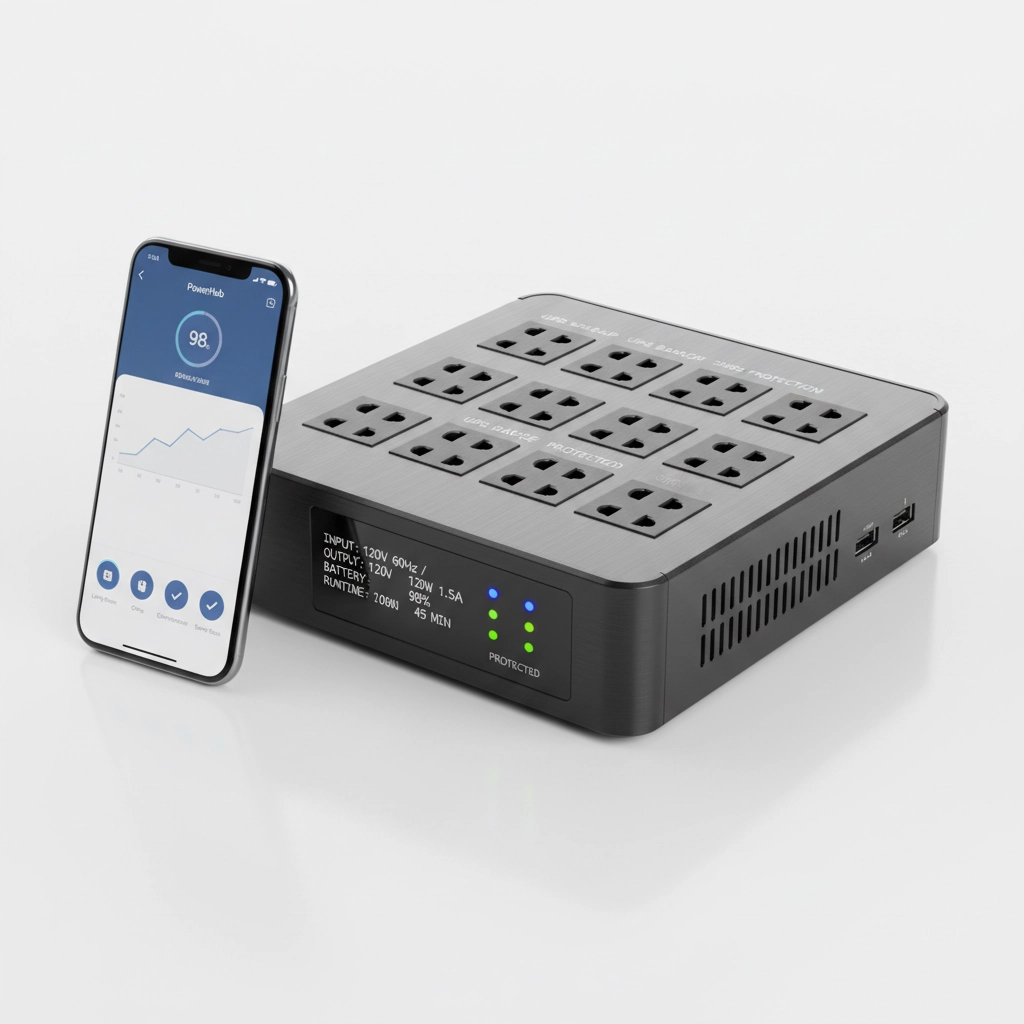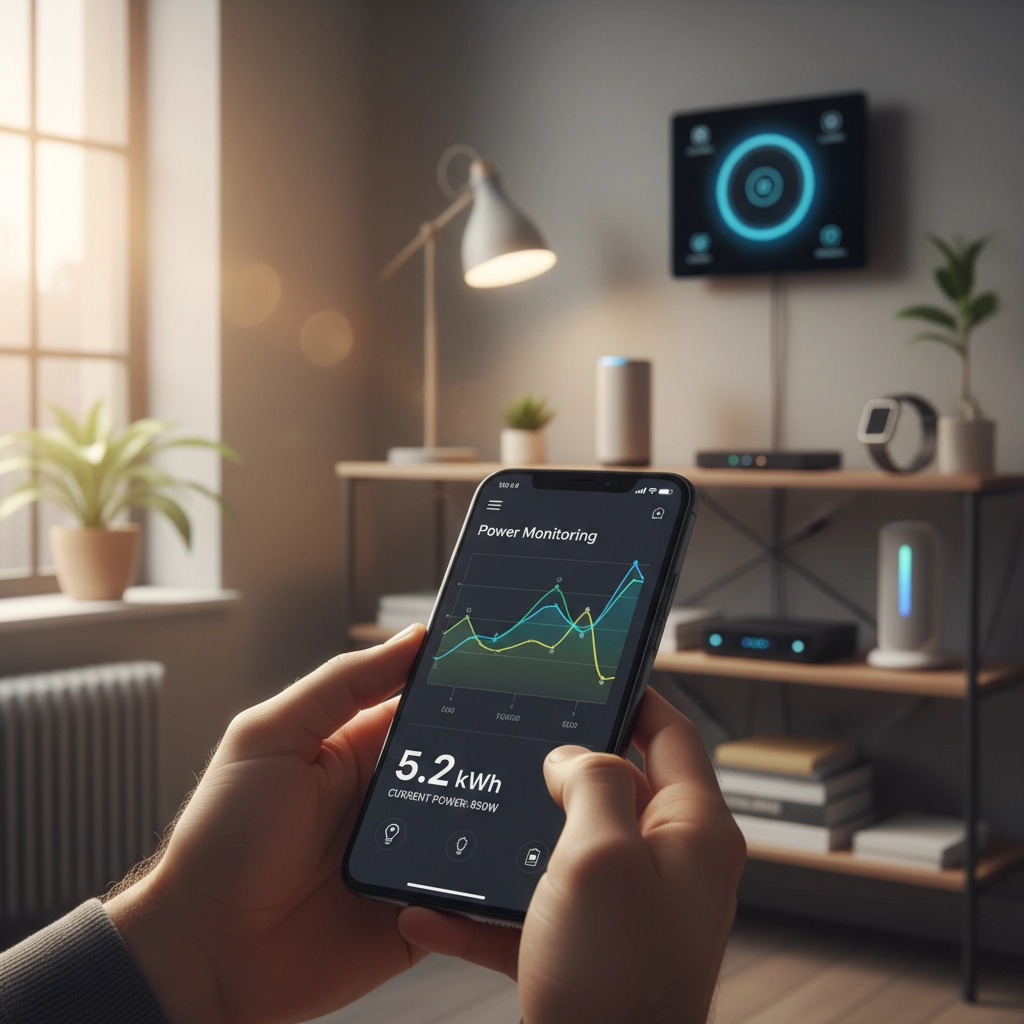
Power Protection for Smart Homes: What You Need to Know
Share
Your smart home is pretty impressive, isn't it? From voice-controlled lighting to security cameras that send alerts to your phone, these connected devices make life easier. But here's the thing – all that smart technology is surprisingly vulnerable to power issues that can turn your high-tech paradise into an expensive paperweight collection.
Power surges, outages, and electrical fluctuations don't discriminate. They can fry your smart thermostat, crash your home security system, or corrupt the data on your network-attached storage devices. Since most smart home devices aren't built with robust surge protection, it's up to you to create a protective barrier around your investment.
Why Smart Homes Are Sitting Ducks
Think about how many connected devices you have compared to a traditional home. Smart TVs, streaming devices, voice assistants, smart switches, security cameras, door locks, thermostats, and wireless routers – the list keeps growing. Each device represents a potential entry point for electrical damage.
The problem gets worse when you consider that these devices are often left powered on 24/7. Your old DVD player might have survived because you turned it off when not using it. But your smart home hub? It's always listening, always connected, always vulnerable.
Lightning strikes are the obvious threat, but everyday power fluctuations from your utility company can slowly degrade sensitive electronics. Even switching on a large appliance like an air conditioner can create internal power surges that travel through your home's wiring.

Your Three Lines of Defense
Protecting your smart home requires a layered approach. Think of it like a fortress with multiple walls – if one fails, the others are still standing guard.
Whole-Home Surge Protection
This is your first line of defense, installed right at your main electrical panel by a qualified electrician. Whole-home surge protectors catch the big hits – like lightning strikes or major grid fluctuations – before they can enter your household wiring.
These units can handle massive amounts of energy, typically absorbing 40,000 amps or more. They're designed to clamp down on voltages above 400 volts, keeping dangerous spikes from reaching your devices. The best part? Once installed, they protect everything plugged into your home's electrical system.
Many insurance companies and equipment warranties actually require whole-home protection, which should tell you something about how serious this threat is.
Point-of-Use Protectors
Your second line of defense consists of surge protectors placed strategically throughout your home. These look like advanced power strips or wall-mounted units, and they're perfect for protecting clusters of expensive equipment.
Place them where you have concentrations of smart devices – your entertainment center, home office, or networking closet. They catch smaller surges that might slip past your whole-home protector and provide an additional safety net for your most valuable electronics.
Smart Surge Protectors with UPS Capability
Here's where things get really interesting. Smart surge protectors combine traditional protection with intelligent features and some even include uninterruptible power supply (UPS) functionality. These devices don't just protect against surges – they keep critical devices running during brief outages.
Brands like APC by Schneider Electric offer smart UPS units that provide both surge protection and battery backup. You can monitor power usage, receive notifications about electrical events, and even control outlets remotely through smartphone apps.

Critical Features to Look For
When shopping for smart home power protection, certain specifications matter more than others.
Joule Rating: This tells you how much energy the protector can absorb before it fails. Higher ratings mean longer-lasting protection. Look for ratings of at least 2,000 joules for point-of-use protectors.
Clamping Voltage: This is the voltage level at which the protector kicks in. Lower numbers are better – they mean the protector responds faster to dangerous surges. Look for clamping voltages of 400 volts or less.
Response Time: Measured in nanoseconds, this indicates how quickly the protector reacts to a surge. Faster is better when protecting sensitive electronics.
Connected Equipment Warranty: Many manufacturers offer insurance coverage for equipment damaged while properly connected to their surge protectors. This shows confidence in their product and gives you additional peace of mind.
Smart Features That Actually Matter
Modern power protection goes beyond just blocking surges. Smart features can help you monitor your electrical environment and respond to problems before they cause damage.
Remote Monitoring: Get alerts on your phone when surges occur or when protection devices need attention. This is especially valuable for vacation homes or rental properties.
Usage Tracking: Monitor how much power your devices consume and identify energy hogs that might be driving up your electric bill.
Scheduled Control: Automatically cut power to devices during peak rate hours or when they're not needed, reducing energy waste.
Integration Capabilities: The best smart surge protectors work with existing home automation systems, allowing you to incorporate power management into your daily routines.

Choosing the Right Protection Strategy
Start by identifying your most critical devices. Your security system, network router, and smart home hub should be top priorities – if these go down, your entire smart home system becomes unreliable.
Next, consider your budget and technical comfort level. Whole-home protection requires professional installation but provides the most comprehensive coverage. Smart surge protectors with UPS capability offer the ultimate protection for critical devices but cost more upfront.
For most smart homes, a combination approach works best:
- Whole-home surge protector at the main panel
- Smart UPS units for critical networking equipment
- Quality surge protectors for entertainment clusters
- Individual surge protection for expensive standalone devices
Installation and Placement Tips
Whole-home surge protectors must be installed by a licensed electrician – this isn't a DIY project. The electrician will assess your electrical panel, recommend the right capacity unit, and ensure proper installation and grounding.
For point-of-use protectors, placement matters. Install them as close as possible to the devices you're protecting. Avoid daisy-chaining surge protectors (plugging one into another), as this can actually reduce protection effectiveness.
Keep surge protectors away from heat sources and ensure adequate ventilation. Many units have indicator lights that show when they're working properly – check these regularly and replace units when indicators show they've reached the end of their useful life.

Maintenance and Replacement
Surge protectors don't last forever. The components that absorb electrical surges gradually wear out with each event they handle. Most quality units last 3-5 years under normal conditions, but major surge events can reduce this lifespan significantly.
Many smart surge protectors include automatic failure indicators or send alerts when they need replacement. Don't ignore these warnings – a failed surge protector provides no protection and may even present safety hazards.
Keep records of when you installed protection devices and set calendar reminders to check their status regularly. Replace any unit that's been hit by a major surge, even if it appears to still be working.
The Cost of Not Having Protection
Here's some perspective: a quality whole-home surge protector costs a few hundred dollars installed. A smart UPS for critical equipment might run $200-400. Compare that to replacing a smart home hub ($150), security cameras ($100-300 each), a smart thermostat ($250), and dealing with the headache of reconfiguring everything.
One significant surge event can easily cause thousands of dollars in damage and hours of setup time. The math is pretty simple – protection pays for itself the first time it prevents damage.
Making Smart Choices
Power protection for smart homes isn't just about buying the most expensive surge protector you can find. It's about understanding your vulnerabilities, choosing appropriate protection levels, and maintaining your defenses over time.
Start with whole-home protection to establish a baseline defense. Add targeted protection for your most valuable and critical devices. Consider smart features that help you monitor and manage your electrical environment.
Ready to protect your smart home investment? Our team at Ace Real Time Solutions can help you design a comprehensive power protection strategy that fits your specific needs and budget. Don't wait for the next storm to discover your vulnerabilities – contact us today to schedule a consultation and keep your smart home running smoothly for years to come.
